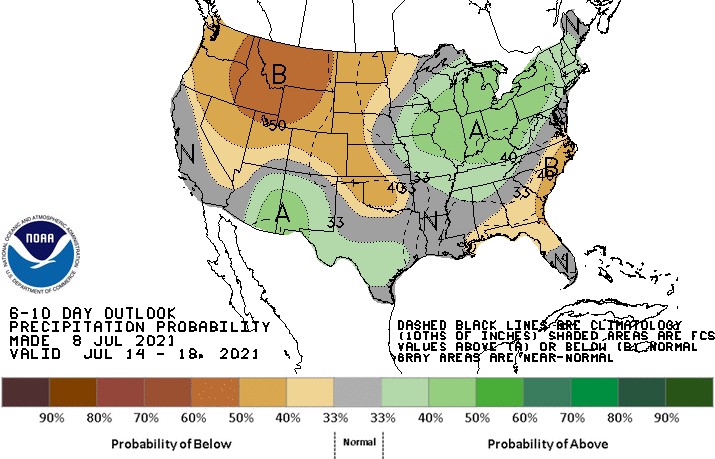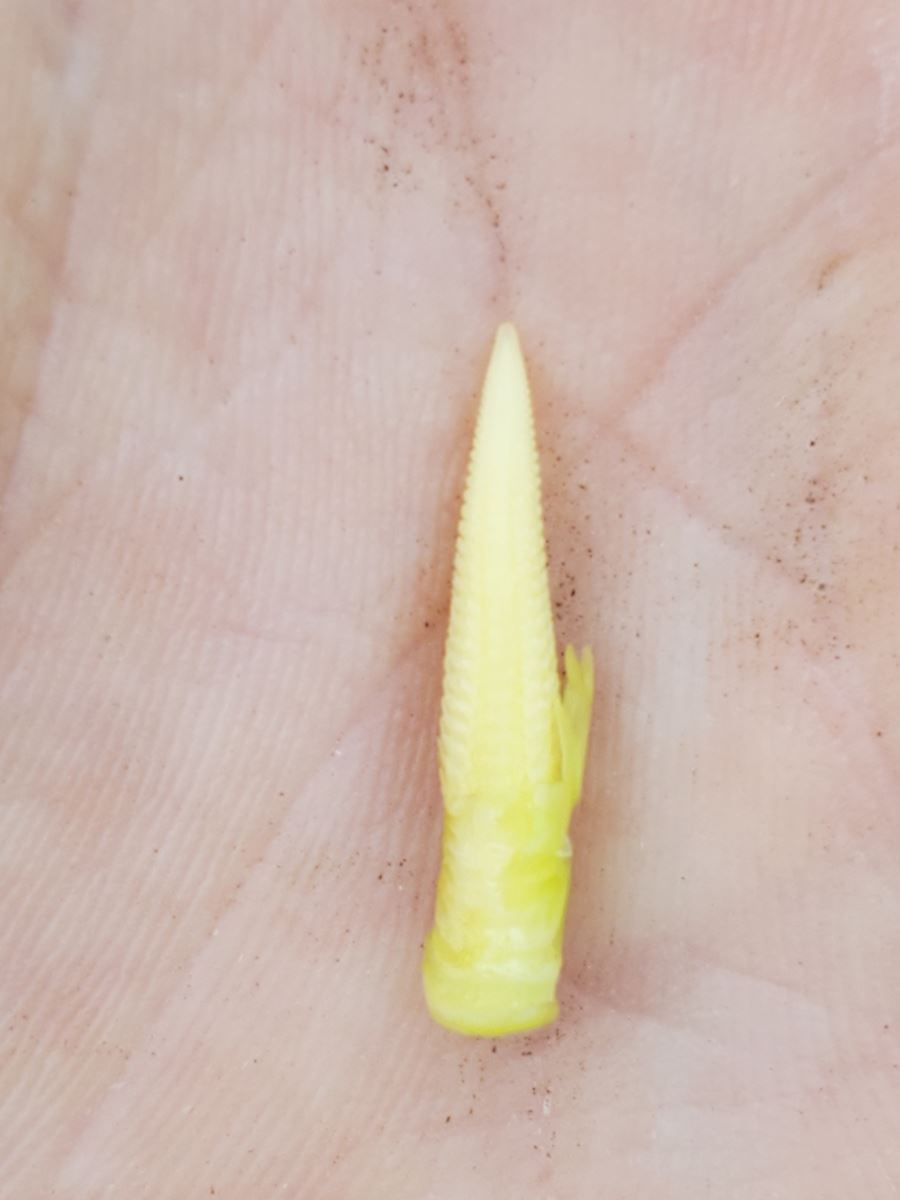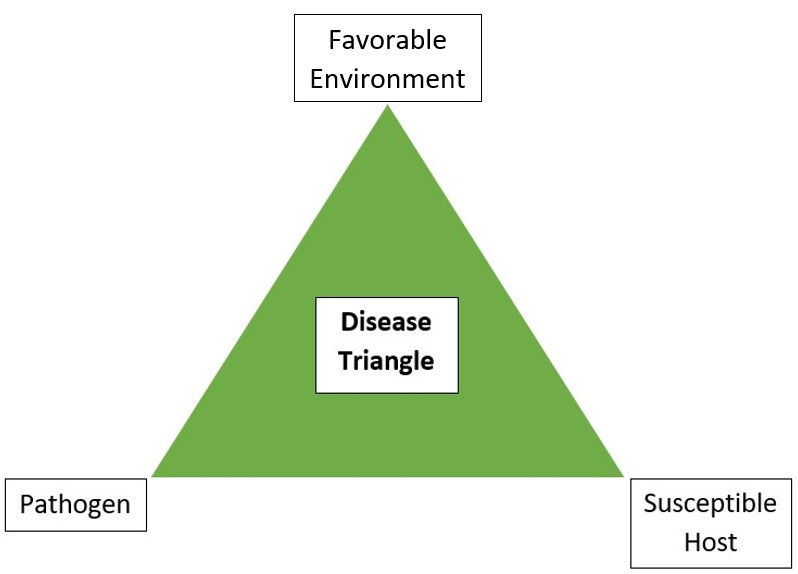July 9th, 2021
posted
by Andrew Blomme on 7/9/2021
in
Weekly Newsletter

July 9th, 2021
Weekly Weather Update
The recent weather for our area has been ideal. Average rainfall for our area is over 2" for the past 7 days with some areas well over 3" for the week. Looking forward, the map below shows the precipitation forecast over the next 6-10 days.

Our rainfall outlook looks optimistic for the near future. We have several more chances for rain over the next two days and forecasted rain over the next 7 days. This moisture is coming at the perfect time with the crop getting close to peak water usage.
This week we accumulated just shy of 170 GDU's. This is right on track with average for this time of year. At the current pace, a corn plant is popping out 2-3 new leaves a week.
Corn Development
The corn crop in our area is just about to finish it's vegetative lifecycle and begin it's reproductive stages. This week the primary ear developed far enough that we can actually count the kernel rows on the ear. The picture below shows a developing ear in my palm. The ear is comparably sized to a dime at this stage.

Kernel rows of the ear are determined by the plant when it reaches V6. This year at V6, our region of the state was experiencing very hot and dry conditions and signs of drought stress were not uncommon. I anticipated that kernel row counts would be lower than usual due to the crop stresses during that time. Fast forward to this week and kernel row numbers look very normal. The majority of ears I found were 16 or 18 kernel rows around which is pretty typical. This is pretty optimistic as it relates to the yield potential of this crop. After pollination we will be able to calculate total kernel counts and start estimating yield.
Considerations for Fungicide
Tassels are just starting to become visible in corn fields. With current trends, the majority of tassels will be out next week. The majority of soybean fields are at R2 and quickly approaching R3. Tassel time is the most effective time to apply a foliar fungicide in corn and R3 is the recommended stage to apply soybean fungicides. With these stages just around the corner, decisions will need to be made on applying fungicide.

The image above is the "Disease Triangle." It denotes the three things (Susceptible Host, Favorable Environment, and Pathogen) that need to be present to for a disease to occur. From a cropping perspective, corn and soybeans are the "Susceptible Host." The "Pathogen" can be fungal spores that overwintered in infected residue from last year or spores that get blown in from the south, as is the case with Southern Rust. In our area of dense corn and soybean production, a pathogen will almost always be present. We already have the first two parts of the triangle, and the last piece that is necessary for disease formation is a "Favorable Environment."
Typically, hot and humid conditions present a more favorable environment for fungal diseases. While recent precipitation has helped improve our yield potential outlook for this crop, it also helps promote fungal disease formation. The near future is forecasted to be warm and humid, creating the "Favorable Environment" that is the missing piece of the Disease Triangle. All these factors trend towards an economic benefit to applying fungicide this year.
Fungicide is the last opportunity many of us will have to positively influence the yield potential of our crop. If you are interested in applying fungicide this year, reach out to Mike soon so we can plan to get to your fields timely and efficiently.
Looking Forward
It will be fun to watch the crop over the next 7 days. Corn fields will rapidly reach tassel. Soybean fields will start to reach R3 in about 5-7 days. There will be fungicide applications going on at this time next week. Silk clipping insects, such as corn rootworm beetles and Japanese beetles, will be out next week. It is recommended to scout for these pests to determine if an insecticide application is necessary to protect yield. Next week's newsletter will be covering these topics and other observations from the field.